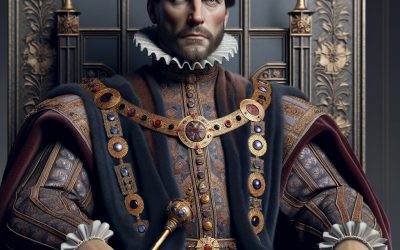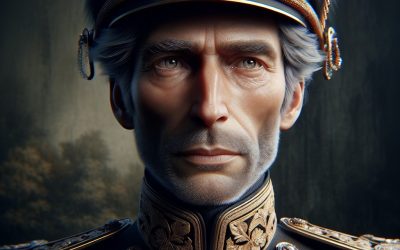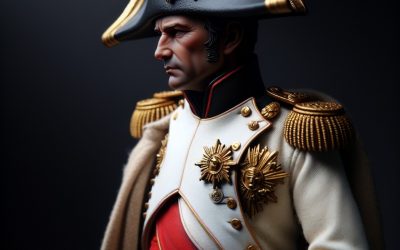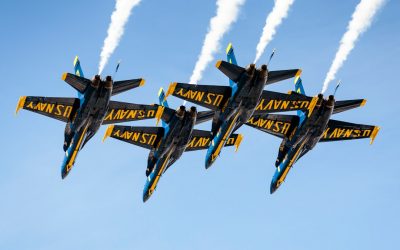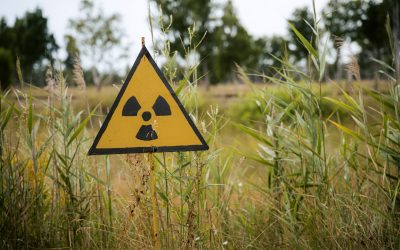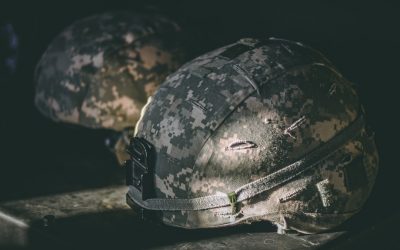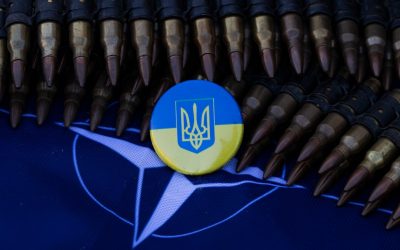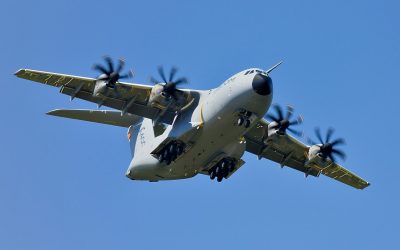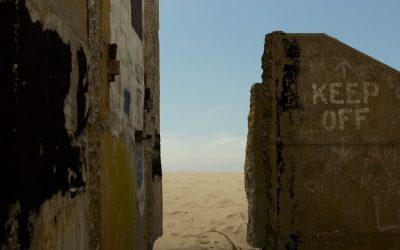🌍 Introduction to General Knowledge
Exploring the World, One Fact at a Time
General Knowledge is the broad understanding of facts, ideas, and concepts from a wide range of subjects—from science and history to geography, culture, politics, and current events. It’s not just about memorising trivia; it’s about building a well-rounded awareness of the world and how it works.
At its heart, general knowledge helps answer questions like:
-
What’s happening in the world right now?
-
Where are different countries located, and what are they known for?
-
Who are some of the most influential people in history?
-
How do basic scientific or social concepts apply to everyday life?
Unlike subjects that focus deeply on one area, general knowledge connects ideas across disciplines. It helps us make sense of the news, take part in conversations, make informed decisions, and understand different cultures and perspectives.
From knowing world capitals and famous inventions to understanding climate change or human rights, general knowledge broadens our worldview. It encourages curiosity, sparks learning, and helps us stay informed in a fast-changing world.
Studying general knowledge improves critical thinking, communication, and cultural awareness—skills that are useful in school, work, and daily life.
Maldives
Maldives (Dhivehi Raajjeyge Jumhooriyyaa (Republic of Maldives)) Capital: Malé Population (Estimated July 2012): 394,451 Area: 298km2 or 115mi2 Currency: Rufiyaa (Rf) Official Language: Dhivehi (Maldivian) Political Information: Presidential Republic Official Religion: Sunni Islam Highest Point: unnamed location on Viligili in the Addu Atholhu at 2.4m or 7.8ft GDP Official Exchange Rate (OER is more precise at gauging a country’s economic power) (Estimated 2011): $2.1 billion (US$) or (GBP) GDP (OER) Per Capita (per member of the population estimated 2011): (US$) or (GBP) GDP Purchasing Power Parity (PPP is good for gauging living conditions and the use of resources but is not as accurate as OER. This data has been calculated based on the sum value of all goods and services produced in the country valued at prices prevailing in the United States) (Estimated 2011): $2.754 billion (US$) or (GBP) GDP (PPP) Per Capita (per member of the population estimated 2011): $8,400 (US$) or (GBP) Time Zone (GMT/UTC): +5:00 Wildlife: Counties/Provinces/States: 7 provinces and 1 municipality*; Dhekunu (South), Maale*, Mathi Dhekunu (Upper South), Mathi Uthuru (Upper North), Medhu (Central), Medhu Dhekunu (South Central), Medhu Uthuru (North Central), Uthuru (North) Leaders: President Mohamed Waheed Hassan. Additional: Gained independence from the U.K. on the 26th of July 1965. Sources: CIA World Fact Book, Encyclopaedia Britannica. Maldives The Maldives, officially the Republic of Maldives, is an island nation situated in the Indian Ocean. It comprises 26 atolls, consisting of over 1,000 coral islands. The Maldives is celebrated for its exceptional natural beauty, featuring crystalline waters, pristine white sandy beaches and vibrant coral reefs. The capital city, Malé, is located on the southern edge of North Malé Atoll. The Maldives boasts a rich history and...
King Henry V of England: The Warrior King Who Redefined Europe
King Henry V of England: The Warrior King Who Redefined the House of Lancaster in 1422 Who Was Henry V and Why Does He Matter? Henry V, also known as Henry of Monmouth, was born in 1387 to Henry of Bolingbroke (later Henry IV) and Mary de Bohun. As a child of the royal family, his life was intertwined with political strife from the beginning. His father deposed Richard II in 1399, making young Henry the Prince of Wales. Henry V’s reign as king of England, beginning in 1413, marked a turning point in medieval England. He became king during a time of internal unrest and external conflict, yet he emerged as a powerful symbol of national unity. His skill as a commander and his vision as a statesman established him as a true warrior king, admired even by his enemies. Summary King Henry V was born in 1387, the son of Henry IV and Mary de Bohun. Henry V became king in 1413 after the death of his father, and immediately began to assert his authority. The Battle of Agincourt in 1415 was Henry V’s greatest military victory, where he defeated a much larger French army. The Treaty of Troyes in 1420 secured Henry V’s position as heir to the French throne and marked a diplomatic triumph for England. The Siege of Rouen in 1418 was a brutal conquest of Normandy by Henry V, which paved the way for the Treaty of Paris in 1420. Early Life and Education of King Henry V Henry V was born on September 16, 1386, in Monmouth, Wales. He...
Duke of Wellington
The Duke of Wellington, also known as Arthur Wellesley, is one of the most prominent figures in British history. Born in 1769, he rose to fame as a military leader and later became a successful politician. His most notable achievement was his victory at the Battle of Waterloo in 1815, which marked the end of Napoleon Bonaparte’s reign and solidified Wellington’s reputation as a military genius. He earned the nickname “The Iron Duke” due to his unwavering determination and strong leadership qualities. Summary The Duke of Wellington, also known as the Iron Duke, was a prominent figure in British history. Wellington’s military career began at a young age and he achieved great success in the Peninsular War and at the Battle of Waterloo. After his military career, Wellington entered politics and served as Prime Minister before becoming a member of the House of Lords. Wellington made significant contributions to British society through education and reform. Wellington’s legacy is still celebrated today through monuments, memorials, and cultural references in literature, art, and film. Early Life and Military Career of the Duke of Wellington Arthur Wellesley was born into an aristocratic family in Ireland. His father was the Earl of Mornington, and his mother was a talented musician. Wellesley received a quality education and showed an early interest in military affairs. He joined the British Army at the age of 18 and quickly rose through the ranks due to his exceptional leadership skills. Wellesley’s military career took off during the Peninsular War, which lasted from 1807 to 1814. He was appointed as the commander of British forces in Portugal and...
Napoleon Bonaparte
Napoleon Bonaparte, born on August 15, 1769, in Corsica, was a military and political leader who rose to prominence during the French Revolution. He came from a modest background, but his intelligence and ambition propelled him to great heights. At the age of 16, he received a scholarship to study at the prestigious École Militaire in Paris, where he excelled in his studies and showed great promise as a military strategist. Napoleon’s rise to power began during the French Revolution. In 1799, he staged a coup d’état and overthrew the Directory, the ruling government of France at the time. He then established himself as First Consul, effectively making him the ruler of France. In 1804, he declared himself Emperor of the French, solidifying his position as the most powerful man in the country. Summary Napoleon Bonaparte rose to power through military conquest and became the Emperor of France. He implemented legal reforms through the Napoleonic Code, which had a lasting impact on European law. Napoleon’s leadership style was authoritarian and dictatorial, and he was known for his economic policies that promoted industrialization and modernization. Despite his patronage of the arts, Napoleon also enforced censorship and controlled artistic expression. Napoleon’s defeat at the Battle of Waterloo led to his exile and eventual death, which remains controversial and subject to conspiracy theories. The Military Campaigns of Napoleon Bonaparte: Conquest and Expansion Napoleon is best known for his military campaigns and conquests. He led France to victory in a series of wars against various European powers, expanding the French Empire and establishing French dominance on the continent. His military tactics and strategies...
Exploring the Grandeur of Blenheim Palace: A Stately Home Fit for Royalty
Blenheim Palace, located in Woodstock, Oxfordshire, is one of the most iconic stately homes in the United Kingdom. It is a masterpiece of Baroque architecture and is renowned for its stunning grounds and rich history. Built in the early 18th century, Blenheim Palace has been the ancestral home of the Churchill family for over 300 years. It is a UNESCO World Heritage Site and attracts thousands of visitors each year. Blenheim Palace holds great importance in British history and culture. It was built as a gift to John Churchill, the 1st Duke of Marlborough, by Queen Anne for his victory at the Battle of Blenheim in 1704. The palace has since been passed down through generations of the Churchill family and has played a significant role in shaping British politics and society. It is also closely associated with Sir Winston Churchill, one of Britain’s greatest leaders, who was born at Blenheim Palace in 1874. Summary Blenheim Palace is a stunning example of British architecture, located in Oxfordshire. The palace has a rich history, having been built as a gift to the first Duke of Marlborough in the early 18th century. The palace’s baroque architecture is a sight to behold, with intricate details and grandeur throughout. The grounds of Blenheim Palace are equally impressive, with a picturesque landscape and beautiful gardens. Visitors can explore the state rooms of the palace, which are filled with opulence and elegance, as well as a Churchill exhibition. The History of Blenheim Palace: A Legacy of the Churchill Family The history of Blenheim Palace is deeply intertwined with that of the Churchill family. John...
military personel in Nato states
The North Atlantic Treaty Organization (NATO) is an intergovernmental military alliance that was established in 1949. Its primary purpose is to promote the collective defense and security of its member states. NATO was formed in response to the growing threat of the Soviet Union during the Cold War. The organization has since evolved to address new security challenges and has expanded its membership to include 30 countries. Currently, NATO has 30 member states, including the United States, Canada, the United Kingdom, Germany, France, and Turkey, among others. These member states are located in North America and Europe. Each member state contributes to the alliance by providing military personnel, equipment, and financial resources. Summary NATO is a military alliance consisting of 30 member states. The total number of military personnel in NATO states is over 3 million. Recruitment and training of military personnel in NATO states vary, but all members have a commitment to maintaining high standards. Military personnel in NATO states have a range of roles and responsibilities, including defence, peacekeeping, and humanitarian missions. NATO states use advanced equipment and technology to support their military operations. Overview of Military Personnel in NATO States The total number of military personnel in NATO states is approximately 3.5 million. This includes active duty personnel, reserve forces, and civilian employees working in defense-related roles. The distribution of military personnel varies among member states, with larger countries like the United States and Russia having the highest numbers. The United States has the largest military force among NATO member states, with over 1.3 million active duty personnel. Other countries with significant military forces include Russia...
Naval power of nato
NATO, the North Atlantic Treaty Organization, is an intergovernmental military alliance that was established in 1949. It consists of 30 member countries from North America and Europe, and its primary purpose is to ensure the collective defense of its members. NATO‘s naval power plays a crucial role in maintaining global security by deterring potential threats and responding to crisis situations. Naval power is of utmost importance in ensuring the safety and security of maritime trade routes, as well as protecting member states from potential aggression. Summary NATO’s naval power plays a crucial role in global security. NATO’s maritime strategy and capabilities have evolved over time. Naval power is an important aspect of NATO’s defence policy. NATO’s maritime forces are involved in crisis management. NATO’s naval power contributes to counter-terrorism operations and the fight against piracy. The Role of NATO’s Naval Power in Global Security NATO’s naval power plays a significant role in maintaining global security. The alliance’s naval forces contribute to the deterrence of potential threats by conducting regular patrols and exercises in strategic areas. These activities send a clear message to potential adversaries that any aggression will be met with a swift and decisive response. Additionally, NATO’s naval forces are often deployed to crisis areas to provide humanitarian assistance, disaster relief, and support for peacekeeping operations. Naval power is particularly important in deterring potential threats because it allows for rapid response and flexibility. Naval forces can be deployed quickly to any part of the world, providing a visible presence that serves as a deterrent to potential aggressors. Furthermore, naval forces have the capability to project power over long...
Nuclear power of nato
NATO, the North Atlantic Treaty Organization, is an intergovernmental military alliance that was established in 1949. One of the key aspects of NATO‘s defence strategy is its nuclear power program. Nuclear weapons have long been seen as a crucial element in international relations, providing a deterrent against potential adversaries and ensuring peace and stability. In this article, we will explore the history of NATO’s nuclear power program, its role in NATO’s defence strategy, the nuclear sharing agreement among member states, the ongoing debate on nuclear weapons, and the future of NATO’s nuclear power program. Summary NATO has a nuclear power program that includes the deployment of nuclear weapons in Europe. The program dates back to the Cold War era and was developed as a deterrent against Soviet aggression. Nuclear weapons are still seen as a key part of NATO’s defence strategy, despite efforts to reduce their role. The nuclear sharing agreement allows non-nuclear states to participate in NATO’s nuclear program. There is ongoing debate about the risks and benefits of NATO’s nuclear power program, and its impact on international relations. The History of NATO’s Nuclear Power Program The origins of NATO’s nuclear power program can be traced back to the early days of the Cold War. Following World War II, there was a growing concern among Western European countries about the Soviet Union’s expansionist ambitions. In response to this perceived threat, several NATO member states began developing their own nuclear weapons programs. The United States, as the leading member of NATO, played a crucial role in assisting these countries in their nuclear endeavors. Over time, NATO’s nuclear strategy evolved...
Military Power of nato
NATO, or the North Atlantic Treaty Organization, was established in 1949 as a collective defense alliance between North American and European countries. Its primary purpose was to counter the threat posed by the Soviet Union during the Cold War. Over the years, NATO has evolved into a powerful military alliance that plays a crucial role in global security. NATO’s military power is derived from its member countries, which include some of the world’s most advanced and capable militaries. These countries pool their resources and capabilities to enhance their collective defense and deter potential adversaries. NATO’s military power is also bolstered by its extensive network of partnerships and alliances with other countries and organizations. Summary NATO is a military alliance formed in 1949 to counter the Soviet Union’s influence in Europe. NATO’s role in global security has expanded to include counterterrorism, cyber defense, and crisis management. NATO’s military capabilities include air, land, and sea forces, as well as intelligence and surveillance capabilities. NATO conducts regular military exercises and training programs to maintain readiness and interoperability among member states. NATO has conducted military operations and missions in Europe, the Middle East, and Africa, including peacekeeping and combat operations. The Role of NATO in Global Security NATO’s mission is to safeguard the freedom and security of its member countries through political and military means. Its objectives include collective defense, crisis management, and cooperative security. NATO’s military power plays a vital role in achieving these objectives and maintaining global security. One of NATO’s key contributions to global security is its commitment to collective defense. Article 5 of the NATO treaty states that an...
Member States of NATO
The North Atlantic Treaty Organization (NATO) is an intergovernmental military alliance that was established in 1949. Its primary purpose is to promote the collective defense and security of its member states. NATO was formed in response to the growing threat of the Soviet Union during the Cold War, with the aim of deterring aggression and maintaining peace in Europe. NATO currently has 32 member states, including countries from North America and Europe. These member states are committed to the principles of democracy, individual liberty, and the rule of law. They work together to address common security challenges and promote stability in the Euro-Atlantic region. Summary NATO is an alliance of 32 member states committed to collective defence and security. The founding members of NATO were the United States, Canada, and ten European countries. NATO has expanded to include 22 additional member states since its founding in 1949. NATO plays a crucial role in maintaining peace and security in Europe through its collective defence and crisis management capabilities. Membership in NATO provides economic and political benefits, as well as access to military capabilities and cooperation with other member states. The Founding Members of NATO When NATO was founded in 1949, it consisted of 12 member states: Belgium, Canada, Denmark, France, Iceland, Italy, Luxembourg, the Netherlands, Norway, Portugal, the United Kingdom, and the United States. These founding members played a crucial role in establishing the alliance and shaping its policies. During the Cold War, the alliance between these 12 countries was instrumental in deterring Soviet aggression and maintaining peace in Europe. The United States provided military support and acted as...
NATO Airforce
The NATO Airforce, also known as the North Atlantic Treaty Organization Airforce, is a collective defense alliance formed by 30 member countries. It was established in 1949 with the signing of the North Atlantic Treaty, and its primary purpose is to ensure the security and defense of its member nations. The NATO Airforce plays a crucial role in maintaining peace and stability in the Euro-Atlantic region. The history of the NATO Airforce dates back to the Cold War era when the threat of Soviet aggression loomed over Europe. The alliance was formed as a response to this threat, with the aim of deterring any potential attack on its member countries. Over the years, the NATO Airforce has evolved and adapted to changing security challenges, including counter-terrorism operations and humanitarian missions. Summary NATO Airforce was established in 1949 to provide collective defence against potential threats to member countries. Member countries of NATO Airforce have different roles and responsibilities, including air policing, air defence, and air support. NATO Airforce operations include air surveillance, air-to-air refuelling, and air strikes in support of ground troops. Aircrafts used by NATO Airforce have advanced features and capabilities, including stealth technology and precision-guided weapons. NATO Airforce offers various training programs and techniques to its personnel, including simulation exercises and joint training with partner countries. Member Countries of NATO Airforce: Roles and Responsibilities The NATO Airforce consists of 30 member countries, including the United States, United Kingdom, Germany, France, and Turkey, among others. Each member country has its own roles and responsibilities within the alliance. The United States, being the largest contributor to NATO, plays a significant...
NATO North Atlantic Treaty Organization
The North Atlantic Treaty Organization, commonly known as NATO, is an intergovernmental military alliance that was established in 1949. It was created with the aim of promoting collective defense and maintaining peace and stability in the North Atlantic region. NATO is based on the principle of collective security, where an attack on one member is considered an attack on all, and all members are obligated to respond. The purpose of NATO is to safeguard the freedom and security of its member countries through political and military means. It serves as a forum for consultation and cooperation among its members, and it provides a platform for collective decision-making on matters of common interest. NATO also plays a crucial role in promoting democratic values, human rights, and the rule of law. Summary NATO is a military alliance formed in 1949 to provide collective defense against potential threats. NATO has 30 member countries, including the United States, Canada, and most of Europe. NATO’s role is to maintain peace and stability through collective defense, crisis management, and cooperative security. NATO’s command structure is divided into two strategic commands, with the Supreme Allied Commander Europe and the Supreme Allied Commander Transformation in charge. NATO faces challenges in the future, including cyber threats, terrorism, and the rise of China. History of NATO: From its inception to the present day. NATO was founded in 1949 in response to the growing threat posed by the Soviet Union during the early years of the Cold War. The alliance was formed by 12 founding members: Belgium, Canada, Denmark, France, Iceland, Italy, Luxembourg, the Netherlands, Norway, Portugal, the United Kingdom,...

